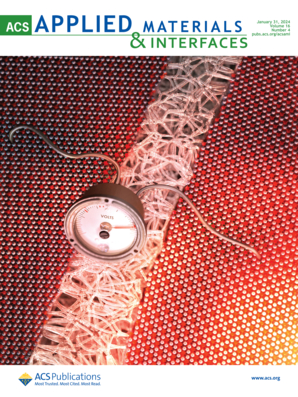摘要
碳中和对人类的生存至关重要,因此,在不消耗额外能源的情况下管理热能的被动热管理变得越来越有吸引力。伪装材料可以通过热辐射散热,减少对能源密集型冷却系统的需求,因此为被动热管理提供了一种前景广阔的解决方案。然而,为低温环境和小型应用开发有效的红外(IR)伪装解决方案仍然是一项挑战,因为低温限制了从表面耗散辐射能的能力。此外,传统的红外伪装材料通常针对单波段(5-8 μm)进行优化,在较低温度下的能量耗散受到很大限制,这就需要一种新的方法来增加能量耗散而不增加能耗。在本文中,我们介绍了一种新型低温红外伪装材料(LICM),它以大气透过率为基础,在非探测波段(5-8 和 14-20 μm)采用双波段共振,旨在应对这些挑战。与传统的红外伪装材料相比,LICM 在 250 和 350 K 时的能量耗散分别增加了 273% 和 167%。尽管能量耗散增强了,但 LICM 仍能将红外特征减少到黑体辐射的 10% 左右,从而确保有效的红外伪装。使用低温红外热像仪(7.5-14 μm)进行的热成像测量进一步证明了 LICM 的卓越红外伪装性能。这种双波段共振设计不仅能将红外伪装扩展到低温环境,还能显著节约能源,是在能源转换、航空航天和可持续热管理技术等领域进行大规模部署的关键要素。

Due to the critical importance of carbon neutrality for the survival of humanity, passive thermal management, which manages thermal energy without additional energy consumption, has become increasingly attractive. Camouflage materials offer a promising solution for passive thermal management, as they can dissipate heat through thermal radiation, reducing the need for energy-intensive cooling systems. However, developing effective infrared (IR) camouflage solutions for low-temperature environments and small-sized applications remains a challenge because the low temperatures limit the ability to dissipate radiative energy from the surface. Moreover, conventional IR camouflage materials, typically optimized for single band (5-8 μm), face significant limitations in energy dissipation at lower temperatures, which requires a novel way to increase the energy dissipation without the additional energy consumption. Herein, we present a novel low-temperature IR camouflage material (LICM) designed to address these challenges by employing dual-band resonances in the nondetection bands, 5-8 and 14-20 μm based on the atmospheric transmittance. LICM demonstrated an increase in energy dissipation of 273 and 167% at 250 and 350 K, respectively than the conventional IR camouflage materials. Despite the enhanced dissipation, the LICM maintained an IR signature reduction of around 10% of blackbody radiation, ensuring effective IR camouflage. Thermographic measurements using an LWIR camera (7.5-14 μm) further demonstrated the LICM's superior IR camouflage performance. This dual-band resonance design not only extends IR camouflage to low-temperature environments but also facilitates significant energy savings, making it a key ingredient for broad-scale deployment in areas such as energy conversion, aerospace, and sustainable thermal management technologies.

 求助内容:
求助内容: 应助结果提醒方式:
应助结果提醒方式:


